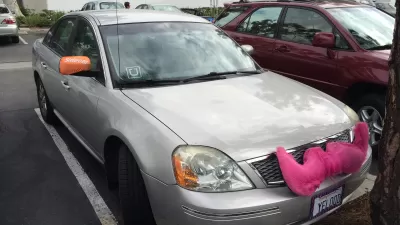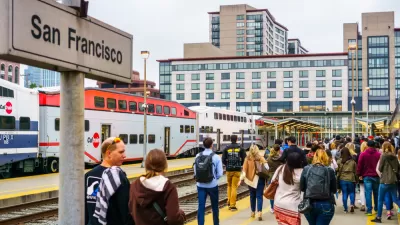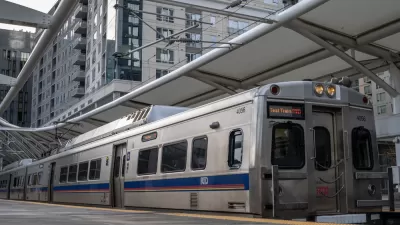Hate it or love it, Uber has changed the transportation game across this country. To boost ridership and change its public image, transit should consider taking some cues from the rideshare giant.

Uber isn't universally beloved by any means, but its Silicon Valley disdain for the way things are done has brought it massive success, especially in cities where it supplements and competes with public transit. This piece gives us three ways transit can learn from Uber. Accompanying GIFs of current and former presidential candidates Clinton, Bush, and Rubio may make all of this more palatable.
Here are the three lessons:
- Transition to app-driven payment. "When you get in an Uber, you don't pay fare like you do on a bus. You just start moving. When you reach your destination, you don't fumble for cash and wait for change like you do in a taxi. You just get out." This creates a "magical feeling" transit would do well to replicate in the iPhone age.
- It's easier for a digital startup to tweak frequencies, but that doesn't make this aspect of customer service any less essential. "With much fanfare, Austin introduced bus services that come every 15 minutes at peak times and every 20 minutes off-peak. For Uber, by contrast, a passenger waiting 15 minutes for service is considered a failure."
- Horror stories aside, Uber places a priority on driver courtesy and quality of service. The author recommends that "transit agencies could incorporate a method for customers who pay by app to rate their rides and use information to grade and improve drivers. This would require a massive–but necessary–change in how agencies relate to their drivers and customers."
FULL STORY: Three Lessons Public Transit Can Learn From Uber

Alabama: Trump Terminates Settlements for Black Communities Harmed By Raw Sewage
Trump deemed the landmark civil rights agreement “illegal DEI and environmental justice policy.”

Planetizen Federal Action Tracker
A weekly monitor of how Trump’s orders and actions are impacting planners and planning in America.

Why Should We Subsidize Public Transportation?
Many public transit agencies face financial stress due to rising costs, declining fare revenue, and declining subsidies. Transit advocates must provide a strong business case for increasing public transit funding.

Understanding Road Diets
An explainer from Momentum highlights the advantages of reducing vehicle lanes in favor of more bike, transit, and pedestrian infrastructure.

New California Law Regulates Warehouse Pollution
A new law tightens building and emissions regulations for large distribution warehouses to mitigate air pollution and traffic in surrounding communities.

Phoenix Announces Opening Date for Light Rail Extension
The South Central extension will connect South Phoenix to downtown and other major hubs starting on June 7.
Urban Design for Planners 1: Software Tools
This six-course series explores essential urban design concepts using open source software and equips planners with the tools they need to participate fully in the urban design process.
Planning for Universal Design
Learn the tools for implementing Universal Design in planning regulations.
Caltrans
Smith Gee Studio
Institute for Housing and Urban Development Studies (IHS)
City of Grandview
Harvard GSD Executive Education
Toledo-Lucas County Plan Commissions
Salt Lake City
NYU Wagner Graduate School of Public Service





























